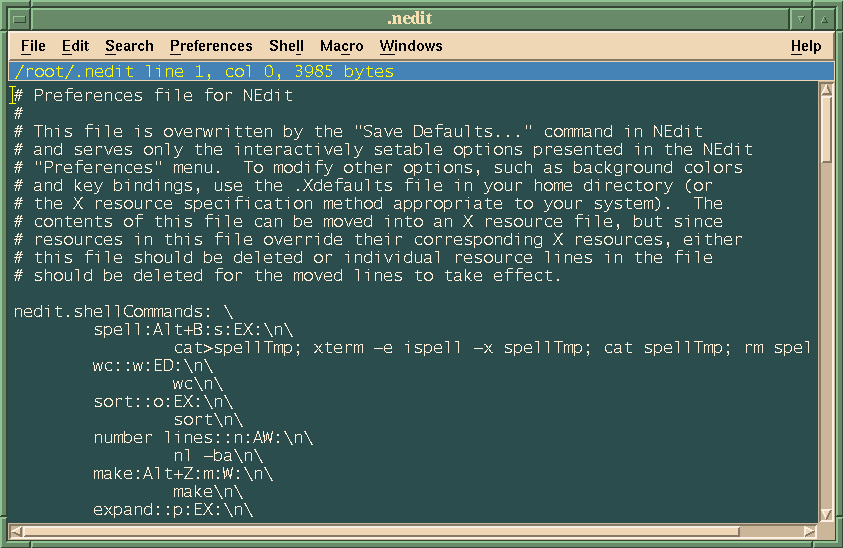
Moves to the n th line from the top of the screen Moves to the column n in the current line Moves to the end of the blank delimited word Positions the cursor to the beginning of the next sentence Positions the cursor to the beginning of the current sentence Positions the cursor to the previous word Positions the cursor at the end of a line Positions the cursor at the beginning of a line The following table lists out a few commands to move around the file − Given below is the list of commands to move around the file. Remember that you must be in the command mode ( press Esc twice). There are many other ways to move within a file in vi. For example, 2j moves the cursor two lines down the cursor location. Most commands in vi can be prefaced by the number of times you want the action to occur. You need to pay attention to capitalization when using the commands. The following points need to be considered to move within a file − Moves the cursor to the right one character position Moves the cursor to the left one character position The following table lists out a few commands you can use to move around one character at a time − Sr.No. To move around within a file without affecting your text, you must be in the command mode (press Esc twice). For example, if you wanted to save the file you were working on as another filename called filename2, you would type :w filename2 and return.

If you want to specify/state any particular name for the file, you can do so by specifying it after the :w. The ZZ command works the same way as the :wq command. When you are in the command mode, type ZZ. The easiest way to save your changes and exit vi is with the ZZ command. You can combine the above command with the quit command, or use :wq and return. The command to save the contents of the editor is :w. This lets you exit vi without saving any of the changes. To ignore this message, the command to quit out of vi without saving is :q!. If your file has been modified in any way, the editor will warn you of this, and not let you quit. Once in the command mode, type colon, and 'q', followed by return. Start by typing some characters and then come to the command mode to understand the difference. Hint − If you are not sure which mode you are in, press the Esc key twice this will take you to the command mode. To come out of the insert mode, press the Esc key, which will take you back to the command mode.

To enter text, you must be in the insert mode for which simply type i. Everything that's typed in this mode is interpreted as input and placed in the file. Insert mode − This mode enables you to insert text into the file. In this mode, whatever you type is interpreted as a command. While working with the vi editor, we usually come across the following two modes −Ĭommand mode − This mode enables you to perform administrative tasks such as saving the files, executing the commands, moving the cursor, cutting (yanking) and pasting the lines or words, as well as finding and replacing.

Before proceeding further, let us understand a few important concepts. You now have one open file to start working on. If a line does not begin with a tilde and appears to be blank, there is a space, tab, newline, or some other non-viewable character present. You will notice a tilde (~) on each line following the cursor. The above command will generate the following output − Opens an existing file in the read-only mode.įollowing is an example to create a new file testfile if it already does not exist in the current working directory − The following table lists out the basic commands to use the vi editor − Sr.No.Ĭreates a new file if it already does not exist, otherwise opens an existing file. You can also use this editor to just read a text file. You can use the vi editor to edit an existing file or to create a new file from scratch. It is more user-friendly than other editors such as the ed or the ex. Its implementations are very similar across the board. It's usually available on all the flavors of Unix system. Vi is generally considered the de facto standard in Unix editors because − This editor enables you to edit lines in context with other lines in the file.Īn improved version of the vi editor which is called the VIM has also been made available now. Editing files using the screen-oriented text editor vi is one of the best ways. There are many ways to edit files in Unix. In this chapter, we will understand how the vi Editor works in Unix.


 0 kommentar(er)
0 kommentar(er)
